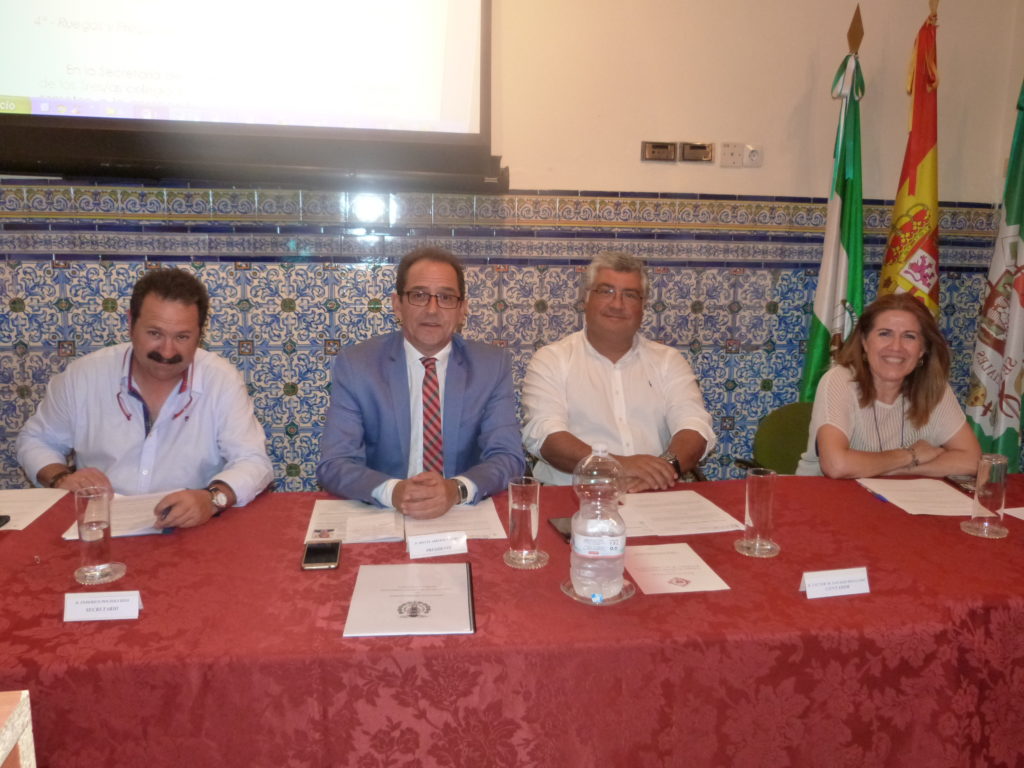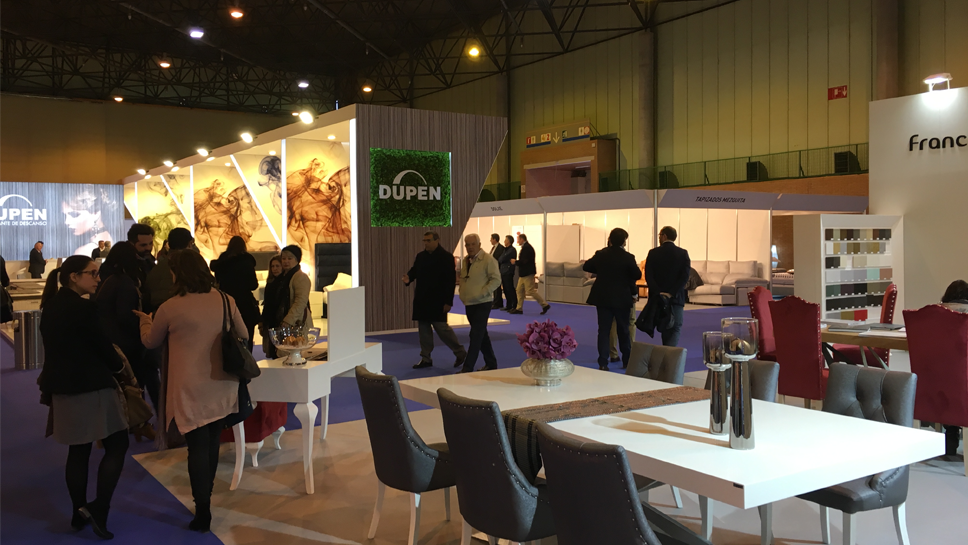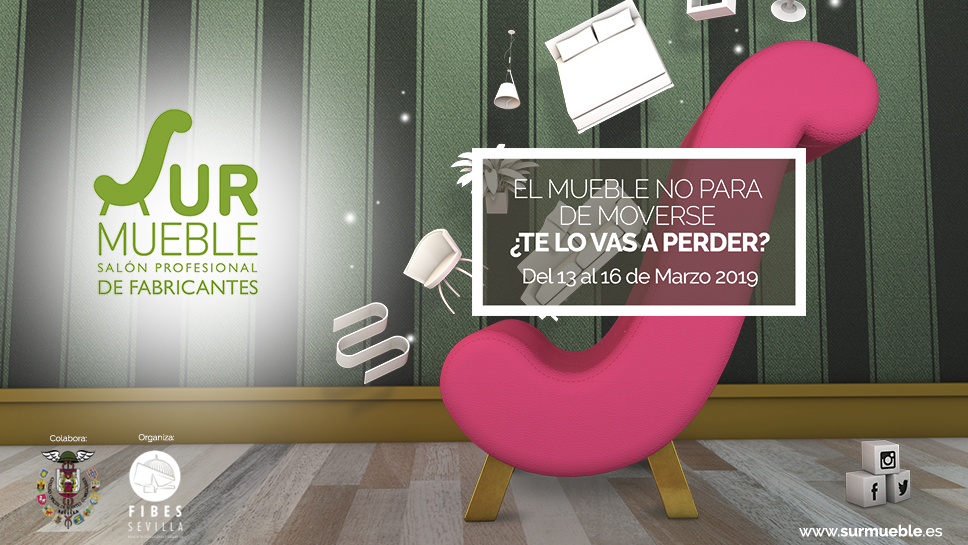A commercial agent’s daughter, the president of Section 24 “Furniture and Decoration” of the Official College of Commercial Agents of Seville, Eva María Ramos Montero, has been in the sector for 15 years. She is passionate about the profession in spite of all the difficulties it has gone through in the last few years due to the crisis. Today, with regeneration, optimism about the numbers and forward-looking approach, she analyses the present situation of the furniture industry and foresees that Surmueble 2019 will become a strategic engine in the region.
Q.: Surmueble trade fair will be back to FIBES in 2019. What does an exhibition of this kind mean to the industry?
A.: Surmueble 2019 is another challenge for the Andalusian furniture sector. As it is known, trade fairs attract a big number of stakeholders (manufacturers, traders, commercial agents, etc.) where interdependence and competition relations are generated at the same time. One of the main aims is to protect and defend the furniture sector’s interests. Trade fairs create industrial and commercial activity facilitating product sales. I would say that Surmueble will be a strategic engine for the furniture sector’s development in the region, a promotional and commercial tool for manufacturers by meeting potential clients, and it will allow traders to see the latest products.
Q.: Could the momentum and recovery of the sector be observed already in the 1st edition of Surmueble held last year?
A.: There is a progressive recovery of the Andalusian furniture sector, the sector accounted for an employability rate of around 95% until before the crisis; although this peak has not been reached yet, figures are rising again. Of course, this recovery was reflected in the first edition of SurMueble where there was certainly business volume according to the surveys that were been carried out among manufacturers. That is why most of the exhibitors will put their trust again through their interest in the next edition.
Q.: What does the furniture and decoration sector represent at the different levels: local, regional and national?
A.: The Andalusian wood and furniture industry had 2,105 companies at the end of 2006, 16% of the total sector in Spain only outranked by Catalonia. The geographical distribution of the business is as follows: Cordova 25%, Seville 22%, Jaen 14.8% and Malaga 14.8%. The presence of the home furniture sub-sector companies stands out in Cordova, while the kitchen, office, and bedding sub-sectors are more relevant in Seville. I would also like to remark that there are some towns where there is a high concentration of companies such as Lucena in Cordova, with half the companies. Other points are Mancha Real in Jaen and Pilas in Seville.
Q.: And at the international level, is export rising?
A.: Due to the crisis we have suffered, manufacturers had to go to new markets. Export has been the lifeline which achieved to support the furniture sector with difficulty. Furniture selling numbers in other countries increased 8.47% in 2016. Another important fact is that 62% of furniture manufacturing companies are already exporting. Exports by Autonomous Community are: Catalonia 36%, Valencia 20%, Andalusia 6.7%, Madrid 6.1% and Aragon 5.3%.

Q.: What countries does Spanish furniture reach?
A.: Europe is our first destination, the ranking is first France, and then Portugal, Germany and the UK are the main destinations for the Spanish furniture in 2017. We should also point out the export numbers to the USA. But there is Spanish furniture all over the world.
Q.: What are the differences between Spanish and foreign furniture?
A.: This is a difficult question because each Spanish manufacturer has its own personality and unique identity, different styles and different lines but I think there is something that differentiates us from the rest and it is that, due to that need to look outward, the Spanish furniture has become dynamic and versatile.
Q.: How do you imagine the sector in 10 years’ time?
A.: I am going to give a completely subjective answer. The furniture sector is going through deep changes, and I think the tendency is a great professionalization. There will be two types of shops, on the one hand, there will be few left in department stores and those which remain will be grouped or franchised; and on the other hand, there will be interior designers, decorators giving highly qualified advice to the final client.
As for manufacturers, the tendency will be furniture customisation.
Q.: What market niches can work in the future?
A.: We can name some, and there are many manufacturers that have started to work on that.
– Contract: furniture installations for public use, for instance for catering, education and geriatric centres.
– Furniture customisation or personalisation: the consumer will customise and design their exclusive model.
– Outdoor furniture: many indoor furniture manufacturers have started to make outdoor furniture.
Q.: What is the impact of digitalisation on the world of furniture and decoration?
A.: We must recognise that the furniture sector has fallen behind regarding technology but digitalisation will also come knocking at the door. To achieve that, companies need to invest in technology.
Q.: In your position as president, how do you think the Section “Furniture and Decoration” can be revitalised?
A.: The sector needs to improve many aspects, for example, its adaption capacity to markets, the existence and help from advanced technological institutes, more training and professionalization of the workforce, increase in company profit margins, innovation both in products and organisational processes, greater agility in launching new products, greater investment in commercial networks abroad, promotion of company brands for the differentiation of the product, and finally, improvement in production and distribution logistics.
THE FURNITURE KEEPS MOVING in 5 tips |
| *One product: of course, furniture. |
| *One style: All, but some preference to vintage and industrial |
| *One material: always wood |
| *One space: Open Concept |
| *One innovation: Combine wood, metal and wool |


